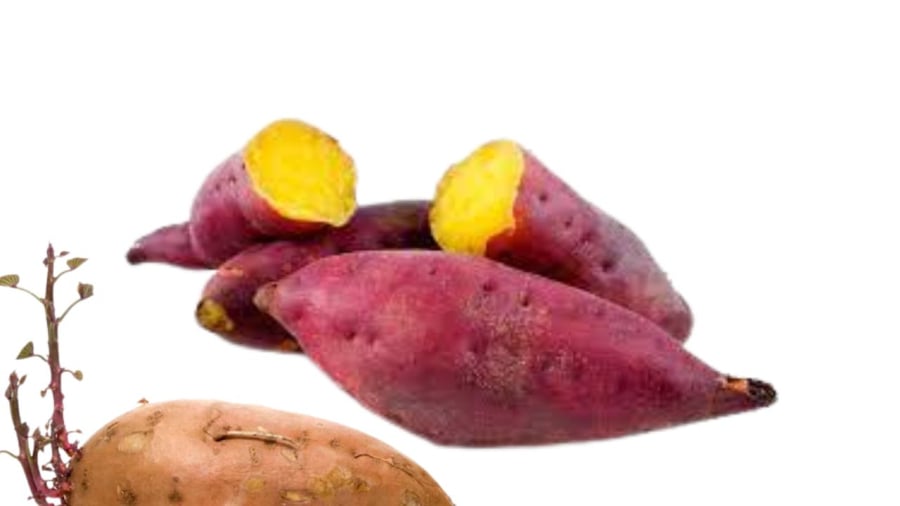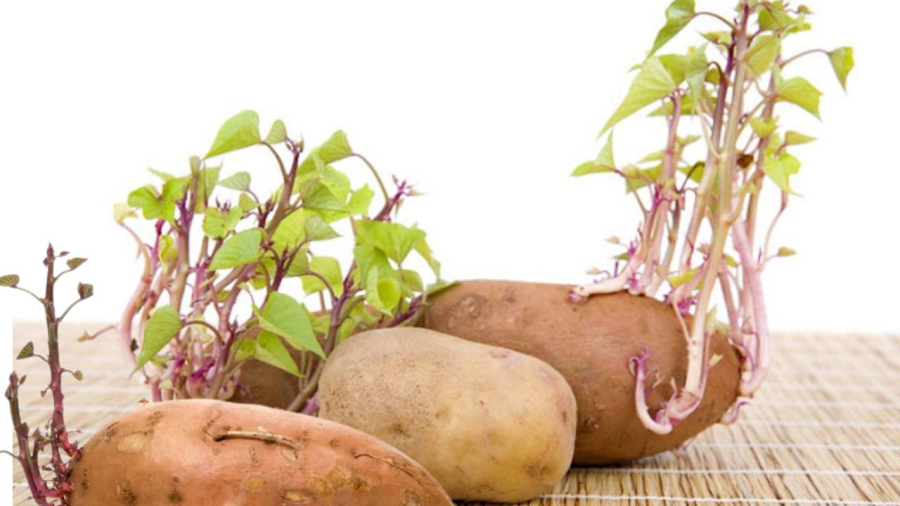When it comes to nutritional value, sweet potatoes are nutrient-rich tubers that are easy to eat and widely sold. Sweet potatoes are considered a good source of immune-boosting vitamins. They are rich in fiber and aid digestion, making them a type of root vegetable that supports weight loss.
Many types of sprouted tubers increase their nutritional value, such as sprouted vegetables and peanuts, but what about sprouted sweet potatoes?

Sprouted Sweet Potatoes are Nutritious and Good for Health, But Require Attention
Sprouted Sweet Potatoes
Amongst various vegetables and tubers, only sprouted potatoes are toxic due to the production of solanine, a highly toxic compound that can corrode the stomach, cause hemorrhage, and paralyze the central nervous system. Normal cooking methods cannot destroy this toxin; cutting off the green parts around potato sprouts also may not entirely eliminate the toxic substance.
Sprouted sweet potatoes, on the other hand, do not produce this toxin. When sweet potatoes sprout, their nutritional value is used to grow the sprouts and leaves, so the tubers become less sweet and lose their aroma. The taste of sweet potatoes changes, and the vitamin and mineral content decreases because they are used to sprout.
Sprouted sweet potatoes can still be eaten if they are not moldy and do not have black spots. When sprouted sweet potatoes show signs of mold or black stains, this is when they are at risk of producing ipomeamarone. This is a toxic substance that imparts a bitter taste to the sweet potatoes and can harm the body.
Therefore, when sweet potatoes have sprouted and become long, it is advisable to limit consumption, and if moldy or black spots appear, they should be discarded to avoid poisoning.

Sprouted Sweet Potatoes are Not Toxic, But If They Develop Mold or Black Spots, There is a Risk of Poisoning
How to Store Non-sprouted Sweet Potatoes
To store sweet potatoes for a longer period, you first need to select fresh, firm potatoes without any discoloration, dents, cracks, or splits. Choose potatoes that are of medium size and avoid those with brown spots or signs of infestation.
Sweet potatoes are prone to sprouting in a well-lit and humid environment. Therefore, wrap sweet potatoes in newspaper and store them in a cool, dry place. Do not use a plastic bag to wrap sweet potatoes, as it will make them damp and prone to sprouting.
Avoid storing sweet potatoes in the refrigerator because the airtight temperature inside the refrigerator can cause sweet potatoes to deteriorate. Moreover, the skin of the potatoes will dry out, wrinkle, and affect the texture and taste, making them less delicious.
If sweet potatoes are stored in a dry, well-ventilated place at a temperature of about 21 degrees Celsius, they can last for about 1 to 2 weeks. After that, they will naturally start to sprout.
If stored at higher temperatures, sweet potatoes are more likely to sprout, while at temperatures between 12 and 14 degrees Celsius, sweet potatoes will not sprout.






































